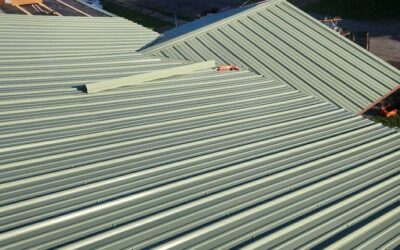Rolled roofing, also known as roll roofing, is a cost-effective and straightforward solution for covering low-slope or flat roofs. It’s commonly used for outbuildings, sheds, garages, and other structures where aesthetics are less of a concern. This guide delves into the essentials of rolled roofing, including its composition, applications, advantages, disadvantages, and installation process.
🧱 What Is Rolled Roofing?
Rolled roofing is a mineral-surfaced, oil-based asphalt product available in rolls typically covering 100 square feet and weighing about 75 pounds. It’s made from similar materials as asphalt shingles, such as asphalt-saturated felt or fiberglass matting, but is thinner and less durable .
🏠 Common Applications
Rolled roofing is best suited for:
- Low-Slope Residential Roofs: Porches, carports, and extensions with minimal pitch.
- Outbuildings: Sheds, workshops, and garages where cost-effectiveness is key.
- Commercial Buildings: Small commercial structures or storage facilities with flat roofs .(
✅ Advantages of Rolled Roofing
- Affordability: One of the most economical roofing options available.
- Ease of Installation: Lightweight and simple to install, making it suitable for DIY projects.
- Quick Application: Can be installed rapidly, reducing labor costs.
- Availability: Widely available at home improvement stores.
❌ Disadvantages of Rolled Roofing
- Short Lifespan: Typically lasts 5–8 years, shorter than other roofing materials .
- Limited Aesthetic Appeal: Less visually appealing compared to shingles or tiles.
- Durability Issues: More susceptible to tearing and weather damage.
- Not Suitable for Steep Slopes: Designed primarily for low-slope or flat roofs
🛠️ Installation Overview
Installing rolled roofing involves several key steps:
- Preparation: Clean the roof surface and apply an appropriate underlayment.
- Measuring and Marking: Use a chalk line to ensure straight application.
- Applying Roofing Cement: Spread roofing cement to adhere the material.
- Laying the Material: Roll out the roofing, pressing it into the cement, and nail it at specified intervals.
- Sealing Seams: Overlap edges and seal seams to prevent water infiltration .
🧰 Maintenance Tips
- Regular Inspections: Check for signs of wear, tears, or bubbling.
- Prompt Repairs: Address any damage immediately to prevent leaks.
- Clean Debris: Keep the roof free from leaves and other debris to prevent water pooling.
🏁 Conclusion
Rolled roofing offers a practical and budget-friendly solution for covering low-slope or flat roofs, especially for outbuildings and secondary structures. While it has limitations in durability and aesthetics, its ease of installation and affordability make it a viable option for many homeowners and builders.
For a visual guide on installing rolled roofing, you might find this video helpful:
How to Install Rolled Roofing on a Garden Shed
 (440) 307-2060
(440) 307-2060


